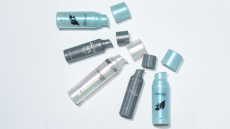Paxar tackles liquids and metals problem for RFID
global market will grow more than ten-fold in the next ten years,
there are still a number of problem areas for this fledgling
technology. Simon Pitman looks at an RFID labelling solution
from Paxar that challenges problems with metal packaging and
liquids.
With the demand for RFID solutions increasing in response to retailers demands to comply with the technology, Research and Market has this week released a report estimating that the global market is set to grow from its current estimated value of $1.95 billion, to reach a projected $26.9 billion by 2015.
But the race to comply with the requirements of some of the world's biggest retailers, namely Wal-Mart, Metro and Tesco has not always proved to be a smooth one for cosmetics and personal care manufacturers alike. As the technology, still very much in its infancy, evolves, so too do ways around various problems.
One of the most serious has proved to be reading the tags. The technology relies on 866/868Mhz frequency range to carry data traffic between the RFID chip and the reading equipment. However, this frequency presents a problem, in that certain materials - namely liquids and metal packaging - can present interference problems, often making data difficult to read.
For the cosmetics and personal care industry, this represents a significant problem, as the vast majority of products come in liquid form, and a significant minority of products - namely hairsprays, some toothpastes and shaving foams - are packaged in metal containers.
US-based technology provider Paxar believes it has the solution to this problem, with the launch of its patent-pending SpaceTags. The technology relies on a 3-8mm layer of water-free foam material that is sandwiched between the RFID chip and the packaging.
Paxar says that the foam provides a crucial distancing between the packaging and the actual tag, allowing interference to be minimized. The variation in the depth of the foam means that the tags can be adapted according to the level of interference that the packaging or the contents might give off.
The tags are produced in conjunction with the company's 9855 RFID printer, which prints off the coded labels, which is then attached to the foam layer, either manually or using a labeller.
Paxar also says that an automatic labelling system incorporating the foam has been developed by German company SRD Maschinenbau, for which it is also applying for patenting.









